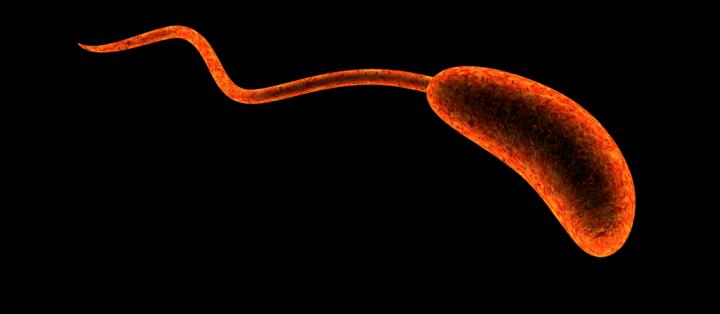Cholera is an acute diarrheal illness caused by infection of the intestine with Vibrio cholerae. People can get sick when they swallow food or water contaminated with cholera bacteria. A new study reveals molecules found in mucus can block cholera infection by interfering with the genes that cause the microbe to switch into a harmful state.
The findings, “Host-derived O-glycans inhibit toxigenic conversion by a virulence-encoding phage in Vibrio cholerae” are published in The EMBO Journal and led by researchers at MIT.
“Pandemic and endemic strains of V. cholerae arise from toxigenic conversion by the CTXφ bacteriophage, a process by which CTXφ infects nontoxigenic strains of V. cholerae,” the researchers wrote. “CTXφ encodes the cholera toxin, an enterotoxin responsible for the watery diarrhea associated with cholera infections. Despite the critical role of CTXφ during infections, signals that affect CTXφ-driven toxigenic conversion or expression of the CTXφ-encoded cholera toxin remain poorly characterized, particularly in the context of the gut mucosa. Here, we identify mucin polymers as potent regulators of CTXφ-driven pathogenicity in V. cholerae.”
The MIT team identified a specific type of glycan that can prevent V. cholerae from producing the toxin that usually leads to severe diarrhea.
“Unlike antibiotics, where you can evolve resistance pretty quickly, these glycans don’t actually kill the bacteria. They just seem to shut off gene expression of its virulence toxins, so it’s another way that one could try to treat these infections,” said Benjamin Wang, PhD, MIT, and one of the lead authors of the study.
The researchers previously discovered that mucus plays a key role in controlling microbes. Katharina Ribbeck, PhD’s lab at MIT has shown that glycans can disable bacteria such as Pseudomonas aeruginosa, and the yeast Candida albicans, preventing them from causing harmful infections.
Most of Ribbeck’s previous studies have focused on lung pathogens, but in the new study, the researchers turned their attention to a microbe that infects the gastrointestinal tract.
Previous research has shown that the microbe becomes pathogenic only when it is infected by a virus called CTX phage.
“That phage carries the genes that encode the cholera toxin, which is really what’s responsible for the symptoms of severe cholera infection,” Wang explained.
The researchers observed that glycans suppress the bacteria’s ability to produce the TCP receptor, so the CTX phage can no longer infect it. They also demonstrated that exposure to mucin glycans significantly alters the expression of many other genes, including those required to produce the cholera toxin.
The researchers went on to investigate which specific glycans might be acting on V. cholerae. Their findings revealed that core 2 glycans played the biggest role in taming cholera infection.
“Our findings suggest that maybe infections occur when the mucus barrier is compromised and is lacking this particular glycan structure,” Ribbeck said.
“We want to learn how to deliver glycans by themselves, but also in conjunction with antibiotics, where you might need a two-pronged approach. That’s our main goal now because we see so many pathogens are affected by different glycan structures,” Ribbeck concluded.


